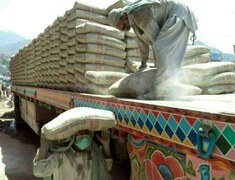AI-based Rice Quality Analyser to transform Pakistan's Rice sector
- NED Student has developed Pakistan’s first AI-based Rice Quality Analyser to test the quality of rice grain in less than 60 seconds.
The first ever Pakistan AI-based ‘Rice Quality Analyser’ is successfully developed by students at the National Center of Artificial Intelligence (NCAI) at the NED University, in collaboration with Rice Lab Pakistan.
This software uses Machine Learning to analyse the quality of rice grain in less than 60 seconds. The analysis is based on 7 main characteristics of rice grain: length, thickness, average weight, and percentage of broken grains.
This Rice Quality Analyser developed in Pakistan has an accuracy rate of 99%, which is similar to modern Japanese and American rice quality analysers. However, the Pakistani version is much more effective than the Japanese ones and much cheaper than the one developed in the United States.
With Pakistan being the world’s 10th largest rice producer in the world, the quality of rice grain significantly impacts its price and export-potential. Previously, the quality of rice has been determined through a traditional process, which takes in a sample of 8 kg rice and assesses its quality using the human eye. This process costs a lot in terms of time and money, and is mostly deemed as ineffective.
Instead, this Pakistan-bred Rice Quality Analyser improves the local rice testing capacity through the use of AI technology. It is also faster and less expensive. Moreover, this new technology takes into account Pakistan’s atmospheric conditions and complies with national rice industry standards.
According to Hafiz Ahsan-ur-Rehman, a research associate at the NCAI and a member of the Rice Quality Analyzer Software Development Team, this new AI software is a key achievement for Pakistan’s rice sector.
This state-of-the-art software will reduce the time taken to complete rice export orders by decreasing the cost of rice classification and increasing testing capacity.
This Rice Quality Analyser will collect scanned images of rice grains. Traders and millers can use any good quality flat bed scanner to do that. The images are then sent to the Smart City Lab team, which immediately analyses the rice grains and then sends back results via email. Currently, the Smart City Lab Country is offering a free trial to popularize this innovative software.
Hafiz adds that although the marketing campaign for this new technology is still in process, they have received positive reactions from major rice-producing countries like China, Indonesia, India and Bangladesh.























Comments
Comments are closed.